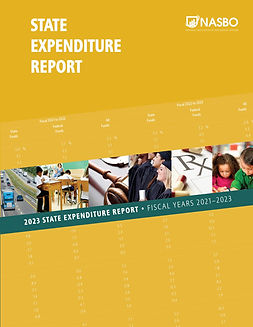MANAGEMENT UPDATE.
CHALLENGES AND SOLUTIONS FOR THE FUTURE OF PUBLIC SECTOR ARTIFICIAL INTELLIGENCE
Insights from The IBM Center for the Business of Government’s "Ensuring Responsible AI for Society" Roundtable (as assembled by Katherine Barrett and Richard Greene, visiting fellows at the Center)
The headlines are full of exciting news about the potential use of artificial intelligence in the public sector. States, localities and the federal government are all in the game, looking to use this technology to help grapple with streams of data and to help leaders make decisions.
But the expanding use of AI challenges governments to use this technology fairly and well.
How best to take advantage of the promise of AI while mitigating risks was a primary topic at a gathering of 30 AI experts who were convened in September by the IBM Center for The Business of Government. The first installment of a four-part series drawn from this conversation, which focused on the benefits ran on the IBM Center website as well as here, in mid-November, and addressed benefits from government use of AI, including:
Translating complex documents into simple English.
Aiding government staff in understanding the needs of the public.
Helping the public access information and services.
Providing faster call responses for taxpayers.
Making sure that the findings of administrative representatives, such as health facility inspectors, are supported by state regulation.
Educating the public.
This Management Update, which also appears as a blog post on the IBM Center’s site, is the first of two more that delve into the roundtable’s views on key challenges of AI that need to be addressed to achieve such benefits, and potential solutions to overcome the challenges.

Two challenges that arose in the conversation included cost and interoperability:
The implementation of AI can be expensive. In their quest to jump into the game, governmental entities may decide to cut corners to save costs, and that can lead to less effective use of this technology. “Not many governments have $200 million to build their own large language model,” said one participant.
There is also a lack of interoperability and standardized definitions in various data sets used in AI operations. “But people assume that they do, in fact, fit nicely together,” said one member of the roundtable. A number of problems may follow, particularly when AI is used to make comparisons between cities and states. When the data means different things in different places, benchmarking exercises can be futile.
Potential solutions to these challenges include:
The need for a solid governance structure to guide an entity’s work with AI in a holistic fashion. “Innovation is going to be driven by industry for the most part,” said one expert, “but there’s always going to be a need for government to provide oversight.”
A centralized approach to AI – whether through a chief AI officer or some other means – can lead to development of guidelines and strategies that provide a productive way forward. Said one member of the roundtable, “the government needs positions” that can ensure quality and measurement of outcomes, and “government needs to embrace” such leadership roles.
Chief Data Officers can also play a guiding role. Another participant pointed out that “all federal agencies now have chief data officers, which are relatively new positions. And more and more federal agencies now have positions that are essentially chief AI officers. And there is an opportunity to define and improve those roles.”
A strong governance structure to oversee AI can help to incentivize others to make investments in AI that can ultimately accelerate its use in government, noted one participant. He expanded that thought by indicating that governments can work with local colleges, universities and community colleges to develop skills in this field.
Efficiencies in the development of AI can also serve to reduce expenses. For example, governance doesn’t necessarily need to be state-specific, said one participant, who indicated that there’s power when entities work collaboratively to deal with regional needs. “One of the things that was really interesting in COVID was how the governors of New York, New Jersey and Connecticut got together, and that was a really good model for regional collaboration,” said one roundtable member in making this point.
Part 3 of this series will cover bias challenges and solutions and will appear in early January. Part 4 will include a summary of the roundtable discussion.
#ArtificialIntelligenceChallengesAndSolutions #GovernmentUseOfAI #ChallengesAndSolutionsForGovernmentAI #StateandLocalArtificialIntelligenceChallengesAndSolutions #FederalArtificialIntelligenceChallengesAndSolutions #EnsuringResponsibleAIForSocietyRoundtable #IBMCenterfortheBusinessOfGovernment #DataGovernanceAndAI #StateLocalArtificialIntelligenceManagementAndPolicy #ChiefDataOfficers #StateAIPolicyImplementation #CityAIPolicyImplementation #CityArtificialIntelligenceManagement #RegionalSolutionsForAI #EthicalUseOfAI #StateandLocalTechnologyManagement #CityTechnologyManagement #CountyTechnologyManagement #StateLocalGovernmentGenerativeAIPolicyandManagement #BenefitsOfArtificialIntelligence #ChallengesOfArtificialIntelligence #StateandLocalGovernmentManagement #StateandLocalGovernmentPerformance #BarrettandGreeneInc








